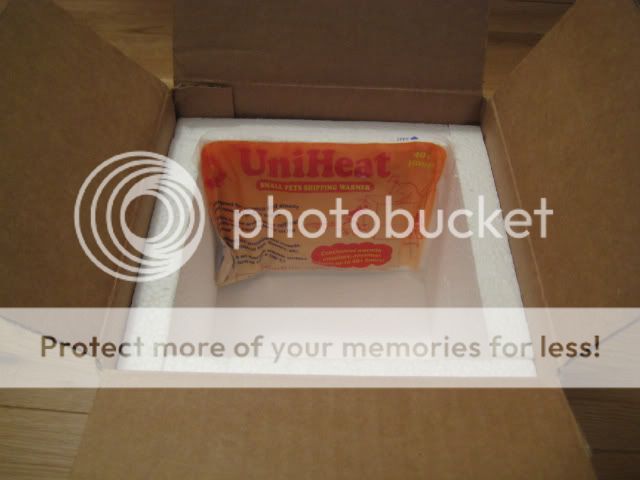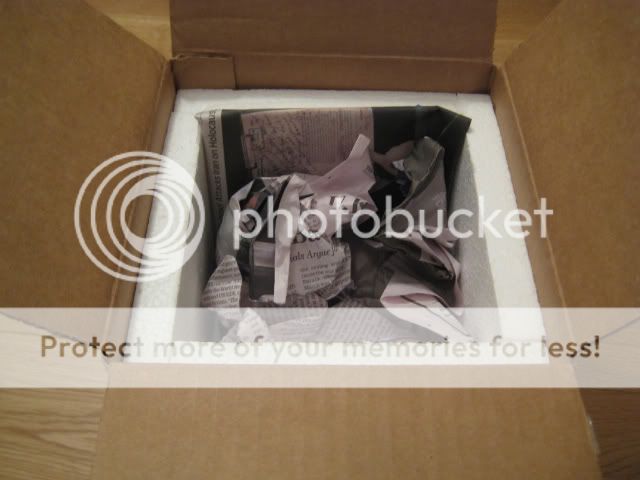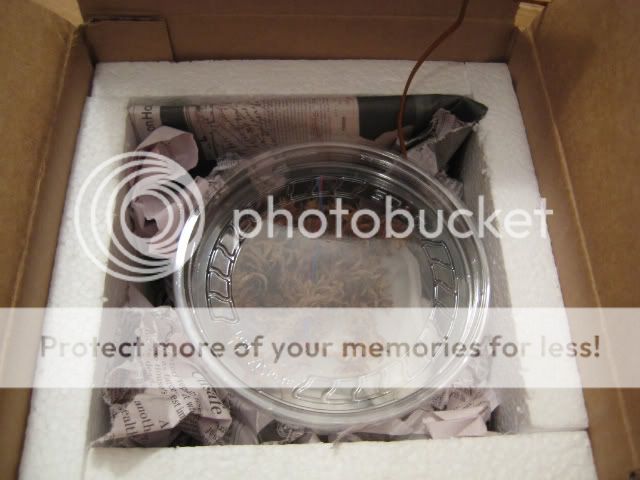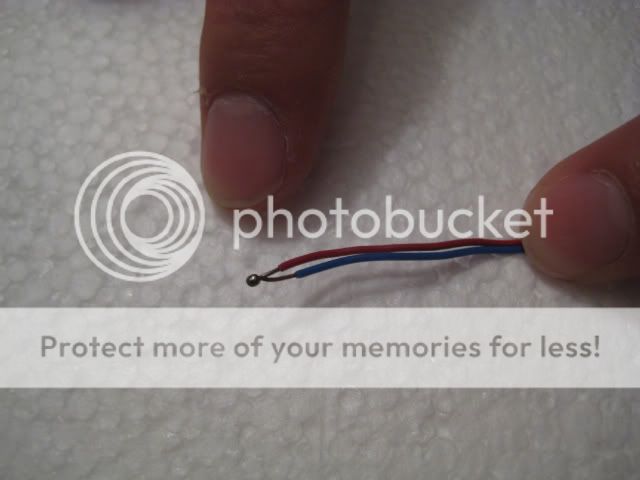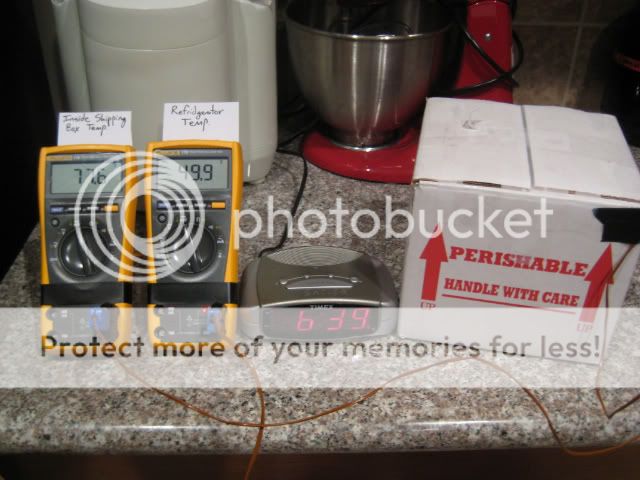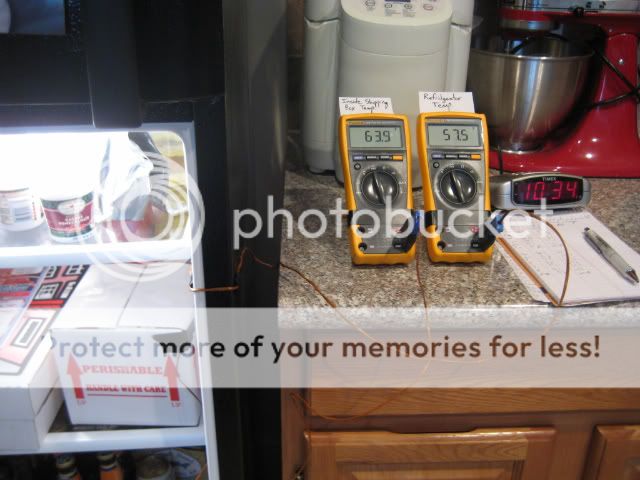Syn
Avid Member
This was originally posted for crested geckos, but it gives you an idea what to expect for temperatures in general.
Thank you to Kevin and Steph
http://www.sadlerreptiles.com
Hope this helps those of you who ship during fall/winter.
Thank you to Kevin and Steph
http://www.sadlerreptiles.com
Hope this helps those of you who ship during fall/winter.
Hey everyone,
So the whole idea of this experiment started with Steph and I wondering exactly how comfortable shipments of geckos actually are during the extreme reaches of the recommended shipping temperatures (40-90 degrees Fahrenheit) even with a hot/cold pack. Basically we wanted to make sure they weren't too hot or too cold inside, regardless of the outside temp. We thought that the best way to go about this would be to re-create the entire shipping process. We posted a poll earlier this week asking what time most people dropped their gecko off at UPS/FedEx (thank you to all who participated) and it seemed like Next Day Air packages needed to be at the hub by 7pm so most people dropped their shipment off between 6:30pm and 6:55pm.
I set our refrigerator's temperature to about 45°F on Thursday since it takes roughly 24 hours for the settings to take place.
Saturday evening around 6:30pm Steph boxed everything needed to overnight a crested gecko sans the actual crestie.
This photo shows where the heat pack is to be taped. We had not opened it yet since we didn't want to lose heat while taking the setup photographs.

Here Steph added a newspaper barrier and crumpled up newspaper for cushioning during shipment.

Here our imaginary crested is inside the deli cup with damp sphagnum moss. More crumpled newspaper has been added to secure the deli cup. If you look closely, you can see the themocouple wire (the twisted pair of blue and red wires) inside the deli cup.

What is a thermocouple?
Thermocouples use the thermoelectric effect to read temperature. They use two alloys that have known properties to produce voltage differences at different temperatures. There is a Wikipedia article on thermocouples if you wish to learn more. For this experiment, just know that it is a thermometer. This picture shows where the two alloys are "welded" together to produce the "bead".

Here is a photograph of us "dropping" our box off at UPS/FedEx at 6:40pm. We let it sit on the counter for 20 min then placed the box inside the refrigerator. We did this to simulate the time it spends at the temperature controlled hub waiting to be placed on a truck. Our apartment was at 76°F when this was happening. The reason the refrigerator temp seems high is because while Steph was boxing up the "gecko" I was placing the refrigerator's thermocouple inside and unfortunately the only way to do this was while the door was open.

So at 7pm we placed the box inside the fridge and closed the door (simulated being placed in the back of a non-temperature controlled shipping truck at 45°F). Every hour we took temp readings until 10:30am (which is the time of promised delivery for overnight shipping). We did not open up the refrigerator door at any point between 7pm and 10:30am. All temps in Fahrenheit (Sorry Europe).
Time_______Fridge Temp_____Box Temp
---------------------------------------------------
6:40pm________44.2__________77.8
7:00pm________43.3__________80.4
8:00pm________45.1__________68.9
9:00pm________45.1__________65.8
10:00pm_______44.8__________65.4
11:00pm_______44.9__________65.2
12:00am_______44.8__________65.1
1:00am________44.9__________65.2
2:00am________45.1__________65
3:00am________45____________64.8
4:00am________45____________64.7
5:00am________44.9__________64.7
6:00am________45.2__________64.3
7:00am________45.2__________64.2
8:00am________46____________64.3
9:00am________45.6__________64.3
10:00am_______45.1__________64.1
10:30am_______45.3__________64
Here is the "delivery" of the box at 10:34am.

So what do the results say? Good things about shipping at 45°F! Some people recommend during the cool down period of the breeding season that your geckos be kept around 65°F to deter mating. This temperature should be just fine for an overnight ship. Another thing to keep in mind is that when people ship, they look at the lows which would be the coldest it gets while shipping, in this experiment we kept the environment as close to 45°F the entire time, not just the "low". Granted that in a perfect world we would have been able to adjust the temperature throughout the night to mimic a temp drop at night instead of kept at a constant but our fridge tells us to expect 24 hours to reach temps which is waaaay outside the boundaries of our experiment.
Also, it was recommended to use a second heat pack to increase the temps inside the box another 10-12 degrees. Unfortunately, that would have placed the box temperature at 90 and above while it was sitting inside the hub waiting to be placed on a truck. It's pretty much left up to your best judgment when to use one or not.
Some things to note about the experiment:
1) There were no airholes poked into the box nor should there be. It would defeat the purpose of insulation and there is plenty of air inside for an overnight ship.
2) The styrofoam insulation used for the box was 3/4". The box itself was 7"x7"x6" and can be purchased from Superior Enterprise.
3) The heat pack used was a 40 hour pack manufactured by UniHeat.
4) The multimeters used to read the thermocouples were Fluke 179s and were calibrated Thursday. The accuracy (according to the Fluke Manual) is 1% + 18 counts.
Well, Steph and I really hope that this helps out everyone currently shipping or thinking about shipping geckos. It's ALWAYS best to ask questions and know what is needed to keep the little guys safe.

